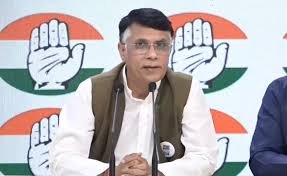By Dr. Mohammad Farooque
Kolkata, | September 16, 2025
Slavery in modern India takes the form of corporate capture, land grabs, and government deals with private capitalists like the Adani Group. This article examines Bhagalpur’s power project as a symbol of a new colonial order.
The Return of Slavery in a Modern Disguise
If we turn the pages of Indian history, one sight keeps reappearing: the sacrifice of people’s interests for commercial bargains. The East India Company lured kings with promises of military support and personal comfort, seized fertile lands, twisted laws to their advantage, and finally chained an entire nation into slavery. That two-hundred-year domination was not sustained by brute force alone, but by greed, compromise, and betrayal of public rights. Sadly, history today seems to be repeating itself. The difference is only in characters: where once the British ruled, now stand corporate traders and industrial giants, and where monarchs once surrendered sovereignty, today’s elected governments are mortgaging people’s trust and resources to capitalist groups.
Bhagalpur’s Power Project: A Clear Symbol of the New Slavery
In Bhagalpur district of Bihar, the Adani Group’s power plant in Pirpainti is not just an energy project—it is a mirror reflecting the organized plunder of public rights under the mask of privatization. A total of 1,020 acres of fertile farmland—where millions of mango and litchi trees flourish—has been leased to Adani for just one rupee per year for thirty years. Nearly ten lakh trees are to be sacrificed. The state even declared this fertile belt as “barren land,” an absurdity for anyone who knows Bihar’s agrarian lifeline. Can this not be called outright contempt for farmers’ labor, environmental survival, and people’s resources?
The Economic Trap behind the Power Deal
The Adani Group has signed a 25-year agreement with the Bihar State Power Generation Company Ltd to build a 2,400 MW power plant with a stated investment of three billion dollars (about ₹26,482 crore). They promise 12,000 jobs. But the question is simple: why can’t the government itself make this investment? Nitish Kumar has ruled Bihar for two decades, Narendra Modi has led the center for over eleven years—so why is a basic need like electricity being pushed into private hands?

Worse, the deal compels Bihar’s people to buy power at ₹6.075 per unit, while states like Maharashtra and Uttar Pradesh receive electricity at ₹3–4 per unit. Thus, not only have the lands and trees been lost, the people are forced to pay higher rates for their own electricity. Congress spokesperson Pawan Khera rightly called this “double looting”—first the resources are seized, then people’s pockets are raided.
Political Questions and Allegations of Coercion
At a press conference in New Delhi, Khera leveled grave allegations: that Bhagalpur farmers are being forced to surrender land under threats, that mango, litchi, and teak plantations worth generations of labor have been handed over at a token lease of one rupee per year for 33 years, and that the central government had initially announced in its budget that it would build this plant itself—but later made a U-turn, handing it to Adani.
Khera argued that this is not an isolated event. In Maharashtra, Chhattisgarh, and Jharkhand, similar power deals were struck in favor of Adani just before elections. Whenever the BJP fears electoral defeat, he alleged, it bows at Adani’s feet. In Bihar, even before Modi’s visit, villagers were reportedly placed under house arrest to prevent protests against the project.
Beyond Bihar: A Pattern of Exploitation
The story is not confined to Bihar. In Chhattisgarh, forests of Hasdeo were cut down for Adani projects. In Assam, large tracts of land were transferred at throwaway prices for cement plants. Now, Bihar’s fertile belt faces the same fate. Isn’t this the architecture of a new colonial system, where the Indian state itself is scripting its people’s subjugation?
Lessons From History: Slavery Never Comes Overnight
History teaches us a harsh lesson. The East India Company entered India under the cloak of promises and trade, eventually enslaving the nation. Those kings who resisted were dethroned or killed. Today, the situation is more tragic: there is no resistance left, because people’s elected governments themselves are laying down public trust at the feet of billionaires. By the time the masses wake up, it may be too late. Slavery never arrives with chains in hand; it seeps in slowly, wrapped in glowing promises of investment, green dreams of “development,” and hollow slogans of progress. If Indians fail to recognize this game today, future generations will ask: Were we ever truly free? And who shackled us again in the chains of slavery?







